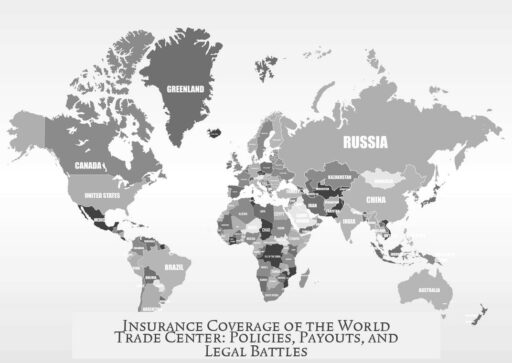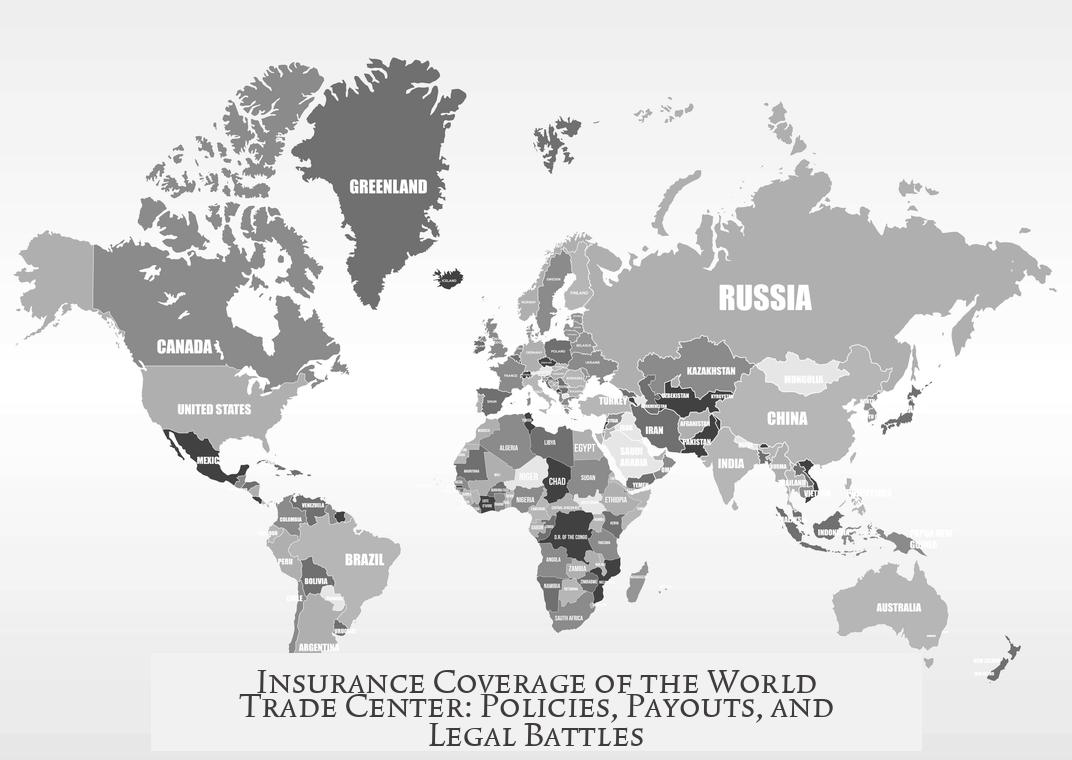The World Trade Center (Twin Towers) had a comprehensive commercial insurance policy that included terrorism coverage. Larry Silverstein, the leaseholder as of July 2001, secured this policy as part of his 99-year lease agreement signed shortly before the September 11 attacks. The policy became central in extensive legal and financial proceedings following the destruction of the towers.

Unlike typical homeowners’ insurance, which often excludes terrorism, commercial real estate policies commonly include such coverage, especially after the 1993 WTC bombing. The 9/11 attacks triggered claims under this terrorism coverage, raising complex legal questions about the nature of the event.
The main legal dispute revolved around whether the destruction of the Twin Towers was one single event or two separate events. This distinction directly affected the total insurance payout allowed by the policy. Silverstein’s insurers argued it was a single event, limiting payout amounts, while Silverstein sought recognition of two events to maximize recoveries.

The insurance claim ultimately resulted in a payout of approximately $4.6 billion by 2007 after extensive negotiations and court battles. This payout was one of the largest in history for a commercial property claim. However, legal actions extended beyond this settlement. Silverstein pursued additional lawsuits, including claims against airlines involved in the attacks, and won $1.2 billion in a 2010 case.
These lawsuits continued for years, reflecting the complex legal environment tied to terrorism insurance and multi-billion dollar losses. The final lawsuit related to 9/11 insurance claims concluded in 2018 with a settlement against Silverstein.

Importantly, none of the insurance proceeds served as personal gain for Silverstein. All funds were directed toward the reconstruction of the WTC site, including the construction of the new One World Trade Center, also known as the Freedom Tower.
- The WTC had a commercial insurance policy including terrorism coverage.
- Dispute focused on whether damages counted as one or two events.
- The insurance payout totaled about $4.6 billion by 2007.
- Additional lawsuits extended settlements through 2018.
- All insurance funds supported the rebuilding of the WTC complex.
What Kind of Insurance Policy Did the World Trade Center (Twin Towers) Have?

To cut to the chase: the World Trade Center had a complex commercial insurance policy with terrorism coverage that played a starring role in one of the largest, most contentious insurance claims in U.S. history. But the story involves more than just a piece of paper. It’s about ownership timing, legal wrangling, and billions of dollars—oh my!
Picture this: Larry Silverstein, a real estate heavyweight, signs a 99-year lease on the World Trade Center complex on July 24, 2001. That’s roughly six weeks before the tragic events of September 11. Alongside the lease, Silverstein snaps up an insurance policy that would soon attract global attention. What happens next reads like a legal thriller.

The Insurance Policy and Terrorism Coverage
Most anyone with a homeowner’s insurance will tell you: your policy probably doesn’t cover terrorism. That’s by design—terrorism is a hard risk to face. But in commercial real estate, where stakes are high, terrorism coverage becomes critical. The World Trade Center’s insurance policy, signed just weeks before 9/11, included explicit terrorism protection.

You might wonder why? Well, remember the 1993 bombing of the Twin Towers? It left a lasting imprint on the insurance landscape. That earlier attack forced insurers and owners alike to rethink and beef up terrorism clauses in policies. The 2001 WTC insurance policy piggybacked on that hard-earned lesson.
Single Event, or Double? The Legal Question That Shook New York

The epicenter of post-9/11 insurance debates wasn’t just the payout size. It revolved around a nuanced legal question: did the two plane impacts count as one event or two? This isn’t just a semantic argument—it’s crucial because the policy had a cap of $3.55 billion per occurrence.
If the attacks were treated as one event, Silverstein could only claim up to $3.55 billion. But if they were two separate events, he might double that haul. You can imagine the insurers shouting, “One event!” while Silverstein’s team argued, “Two, absolutely two!”
The Insurance Payout Drama: Dollars and Legal Battles
Eventually, the insurers coughed up a hefty $4.6 billion, but it wasn’t a smooth road. Sorting out who owed what took until 2007—a long saga filled with lawsuits and counter-suits.
Then the story took a twist: Larry Silverstein went back to court in 2008 for even more money. His claim was tied to the airlines involved in the attacks—American Airlines and United. By 2010, he won an additional $1.2 billion. The courts and insurers found themselves entangled in what felt like an endless legal tangle.
The lawsuits rolled on for years. Ironically, the last legal skirmish ended in 2018 with Silverstein losing a final lawsuit. It’s a stark reminder that the world of insurance, especially after cataclysmic events, is as much about courtroom battles as cash payments.
What Did Silverstein Do With All That Money?
Despite the billions, Silverstein didn’t exactly move to a private island with gold-plated yachts. The insurance awards funneled right back into the reconstruction of the World Trade Center complex. You know that iconic Freedom Tower—officially the new 1 World Trade Center? That rising star stands on the foundation funded in part by these insurance settlements.
This means the insurance payouts truly served the public interest. They helped rebuild a symbol of resilience and hope, turning loss into a new beginning.
Lessons From the Twin Towers Insurance Saga
What can today’s property owners learn from this? For one, in commercial real estate, terrorism coverage is not a “nice-to-have”—it’s a must-have. The 9/11 events reshaped insurance policies across industries, thanks partly to the Terrorism Risk Insurance Act of 2002. These policies now generally include terrorism risk, making them tougher to dodge—even if you tried.
Secondly, the legal definition of “event” matters. When disaster strikes, how insurers interpret the incident can make or break claims. It’s worth ensuring clarity about how your policy handles multi-part incidents.
Finally, the WTC insurance story spotlights the importance of timing. Silverstein took out the policy just before the attacks. Imagine if it were days later? The difference in coverage and legal outcomes could have been staggering.
In Conclusion
The World Trade Center (Twin Towers) held a specialized commercial insurance policy with terrorism coverage that became one of the most complicated and high-stakes insurance claims ever. While the policy initially sparked a fiery legal debate over whether the attacks counted as one or two events, it ultimately resulted in an insurance payout around $4.6 billion. This saga stretched over more than a decade of legal battles. The money went toward rebuilding the site, bringing the Freedom Tower and the new complex back to life.
Next time you hear about insurance struggles after a disaster, remember this story. It shows how a well-crafted policy can help rebuild not just buildings, but also symbolically, a city’s spirit.
Wondering: if you owned a landmark property today, would you double-check your terrorism coverage? It’s worth a thought, considering how history taught us one lesson loud and clear.




